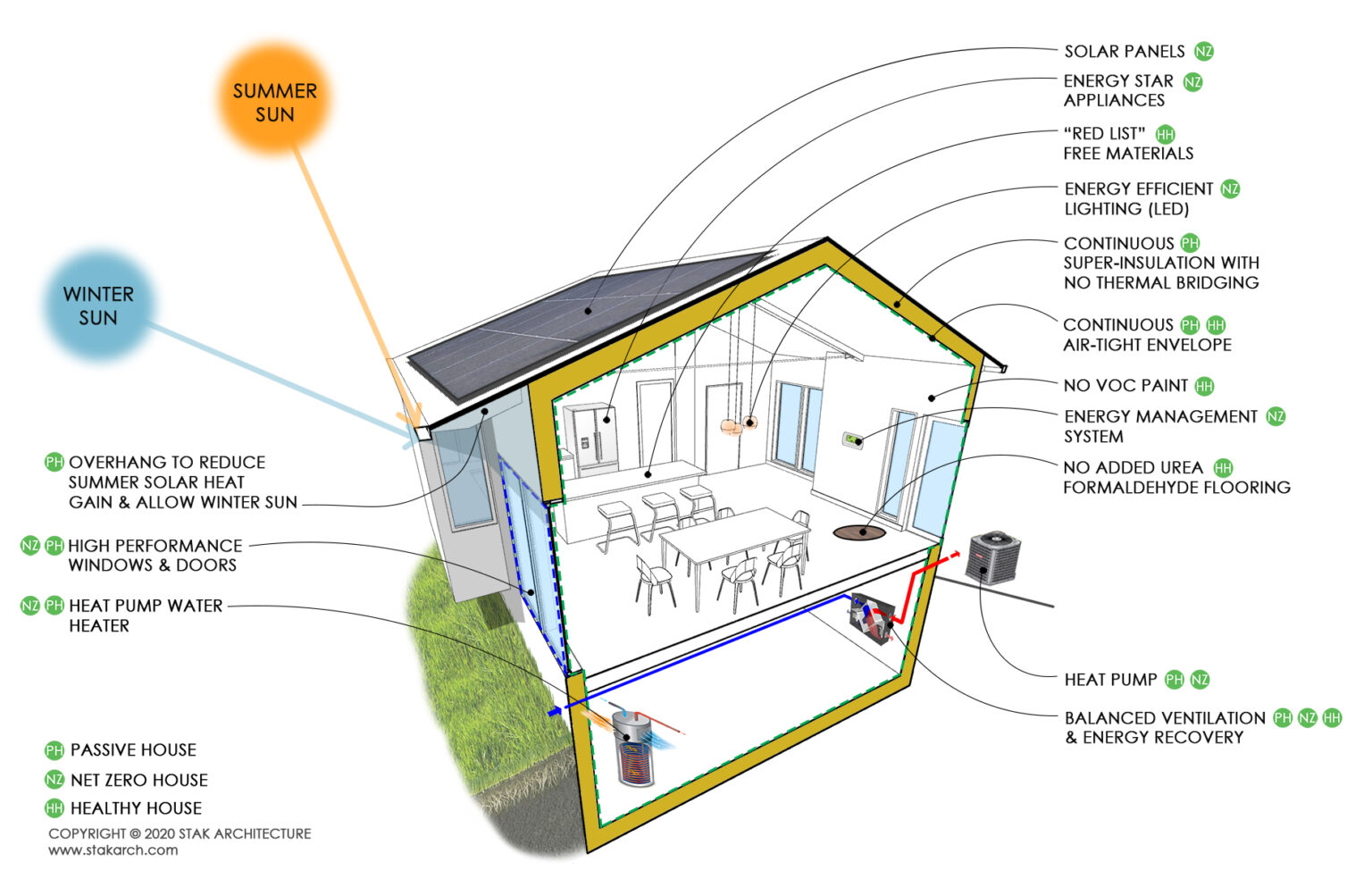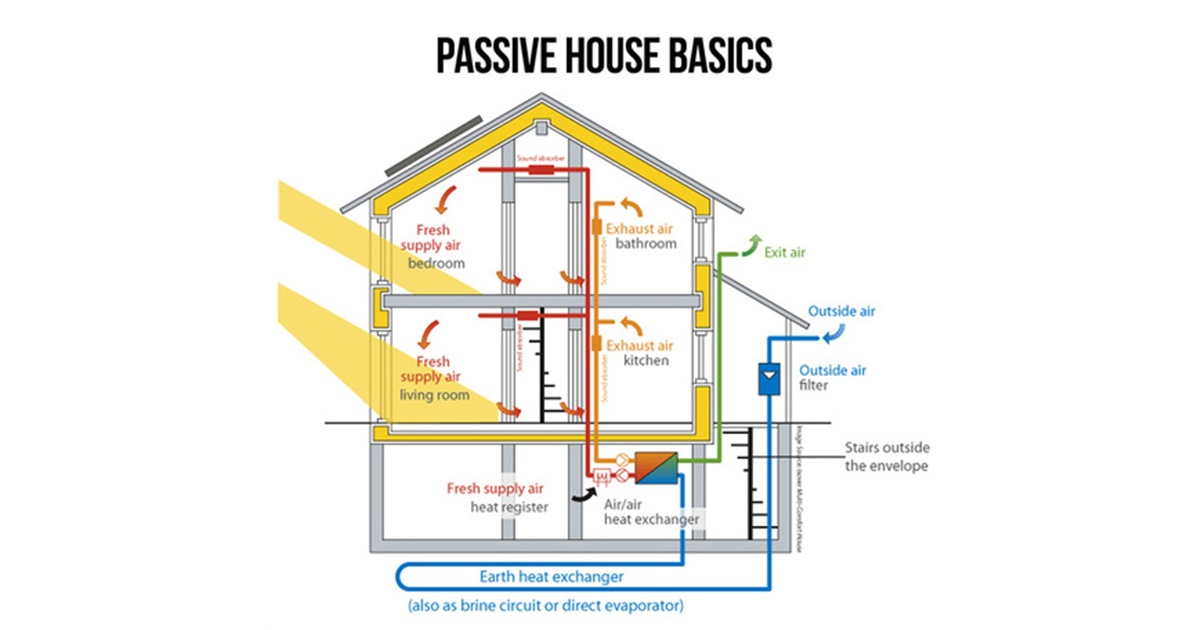Table Of Content

Superior indoor air quality is provided around the clock via a fresh air system with air filters and heat-recovery ventilation (HRV). While many people assume that passive house design is only for new home construction, this is simply not the case. Homeowners working on a remodeling project can upgrade their house to meet the passive design standards.
America’s First Passive House-Certified Hotel Is A Smart Weekend Getaway From New York City
Phius-certified buildings go through a rigorous quality control process, ensuring safety for the environment and the building inhabitants. Thanks to low-energy requirements, the Passive House standard is seen as a way of dealing with climate change and eliminating the need for fossil fuels, which is why the standard is being adopted in building codes in Europe and some cities in North America. A thermal bridge exists where heat passes through a material with higher thermal conductivity than the surrounding materials. Insulation of window frames is important, too, as frames can constitute up to 10% of a window surface area and represent the greatest point of unwanted heat loss.
Earthship Homes: Are They the Next Big Sustainable Housing Trend?
We also have solar panels in a field adjacent to our house and recently signed on to receive power from wind farms. Today, PHI's standards are the most widely followed internationally, while Phius, the Passive House Institute US, separated from PHI in 2011 and sets different standards for North American buildings. The PHI standard applies the same criteria anywhere in the world; the PHIUS standard varies slightly according to location. With increasing concerns about climate change and urbanization, Passive House designs can now be found on every continent, including on Antarctica. Passive House (or Passivhaus) is a design and construction concept defined by energy efficiency, comfort, and affordability. Worldwide, it is arguably the strictest energy efficiency standard for buildings.
What is Boho Style? 6 Things All DIY Designers Should Know
One of the most valuable benefits of a passive home is how energy-efficient it can be. A passive home has the potential to use 90% less energy than a typical home, which not only helps the environment but your wallet as well. Since a passive house can heat, cool, and regulate temperatures, the monthly energy bill can end up being significantly lower than a traditional home. The topnotch insulation and ventilation help prevent heat loss and regulate temperatures so that residents can live comfortably no matter where they are inside the home. “We don’t see any new construction here in the Bay Area that is not focused on energy efficiency,” says Rick Fuller, a top agent in the San Francisco, California area; he works with 74% more single-family homes than the average agent in his area.
The eventual construction of four row houses (terraced houses or town homes) were designed for four private clients by the architectural firm Bott, Ridder and Westermeyer. The first Passivhaus residences were built in Darmstadt in 1990, and occupied by the clients the following year. "The big knob you can turn is cost of living," says Tommy Sikes, a certified financial planner and founder of Traveltirement, where he highlights affordable homes in France and Italy through a newsletter and social media channels.
Thermal Control
With advances in ultra low U-value glazing, a "passive house" based (nearly) zero heating building is proposed to supersede nearly-zero energy buildings in EU. The zero heating building reduces on the passive solar design and makes the building more opened to conventional architectural design. Instead, "passive houses" sometimes have a dual purpose 800 to 1,500 watt heating and/or cooling element integrated with the supply air duct of the ventilation system, for use during the coldest days.
HPD Passive House Projects
Furthermore, residential buildings account for more than 20 percent of energy consumption in the country, according to the U.S. Department of Energy, and each household releases about 8.7 tons of carbon dioxide per year. As concern over interrupted service, financial impacts, and sustainable solutions grows, the demand for more efficient and resilient homes is also growing.

This means that it requires less energy to heat or cool the building, reducing its environmental impact and long-term costs. These living infrastructure elements not only provide aesthetic value but also offer numerous environmental benefits, such as improving air quality, reducing stormwater runoff and enhancing insulation. By incorporating vegetation into building design, sustainable housing projects can harmonize with nature and contribute to the creation of more resilient and livable cities. There have been schools, kindergartens, and a supermarket, all built according to Passivhaus standards. Instead, it gets energy from solar hot water collectors, and processes water through a built-in water treatment system. It also has a heat recovery ventilation system, EPS insulation, and IKEA furnishings.
Energy-Efficient
Key Funding Secured for Connecticut Passive Housing Project - Apartment Finance Today
Key Funding Secured for Connecticut Passive Housing Project.
Posted: Thu, 25 Apr 2024 11:26:27 GMT [source]
Typical buildings consume up to 40 percent of global energy use and contribute up to 30 percent of annual global greenhouse gas emissions and are contributors to climate change. With Passive House standards you will enjoy comfort, exceptional indoor air quality, and a healthy sustainable home with low utility bills. The PASSIVE HOUSE Standard offers a solution towards a low-carbon future for residential and commercial building. Phius is the smartest path to a zero-carbon built environment, certifying the majority of all passive house projects in North America with our locally tailored, globally applicable passive building standard.
Of particular interest is the fact that the homes can stand alone or be stacked up to five stories high, offering an ideal solution for developers building multifamily projects. Each home is steel-framed and features robotic walls and furniture to capitalize on the available space, with each room serving multiple purposes. Additional sustainable features include solar integration — reducing reliance on the traditional power grid — and plumbing systems that separate gray and black water — promoting efficient water use and reuse. Residents benefit from great indoor air quality, comfortable and even temperatures, significantly reduced energy bills and acoustically superior homes from reduced noise attenuation from neighbors and street noise. To meet the certification standards of a passive house, homes must be built to the best possible standards.
Learn how you can build comfortable, healthy, cost-efficient buildings for a more resilient world. Passive solar building design and energy-efficient landscaping support the passive house energy conservation and can integrate them into a neighborhood and environment. However, the use of solar gain, especially in temperate climate regions, is secondary to minimizing the overall house energy requirements. In climates and regions needing to reduce excessive summer passive solar heat gain, whether from direct or reflected sources, brise soleil, trees, attached pergolas with vines, vertical gardens, green roofs, and other techniques are implemented. A passive house is built to much higher energy efficiency standards than a conventional building.
The Passive House Institute (PHI) is an independent research institute that has played an especially crucial role in the development of the Passive House concept - the only internationally recognised, performance-based energy standard in construction. On and off site renewable energy production can be integrated creating Net Zero Energy (NZE) buildings. The idea is first to reduce the consumption drastically and then supplement with a small system. The PASSIVE HOUSE standard has been successfully implemented worldwide with tens of thousands of buildings in all different hot and cold climates. The Phius Alliance is Phius' membership arm, consisting of more than 1,000 industry professionals from across North America. Enjoy unmatched member benefits, including access to a nationwide network of passive building professionals, exclusive resources, and discounts on trainings and events.
In some cases a micro-heat pump is used to extract additional heat from the exhaust ventilation air, using it to heat either the incoming air or the hot water storage tank. Small wood-burning stoves can also be used to heat the water tank, although care is required to ensure that the room in which stove is located does not overheat. The world's tallest "passive house" was built in the Bolueta neighborhood in Bilbao, Spain. At 289 feet (88 m), it is currently the world's tallest building certified under the standard in 2018. The $14.5 million, 171-unit development (including a nine-story companion to the high-rise) consists entirely of social housing.
"It might cost you $70,000 a year to have a middle-class retirement in the United States," Sikes says. "If you have that money in southern Italy, you can live like a king, including renting or purchasing a property." Sign up for CNBC's new online course How to Earn Passive Income Online to learn about common passive income streams, tips to get started and real-life success stories.
“Think about water-conserving faucets and toilets, smart appliances that maximize energy and water performance, and other features that make living more sustainably even easier,” he says. Insulated and laminated impact windows and doors do wonders for reducing a home’s overall energy consumption, explains Manny Angelo Varas, president and CEO of homebuilder MV Group USA. If you’re replacing windows in a home, take a closer look at triple-glazed windows, also known as triple-pane windows. “These have a much better insulation value, and with the right films, can cut down on not only solar heat gain but UV rays that can damage artwork, fabrics, and finishes,” says Schneeberger. A truly passive building will have fewer than 0.6 air changes per hour (ACH), meaning that there are no air leaks and no drafts near windows or doors.
Keep reading to discover more about passive house design and how it can effectively align with energy efficiency in the home. The Phius standards guide the successful design and construction of passive building structures worldwide. Passive design is a holistic approach that takes every last factor into account, down to heat emissions from appliances and occupants. The best way to build passive is the Phius standard and accounts for the overwhelming majority of passive buildings in North America. Proper mechanical system selection and commissioning is critical to maintaining comfortable and safe moisture levels inside passive buildings.

No comments:
Post a Comment